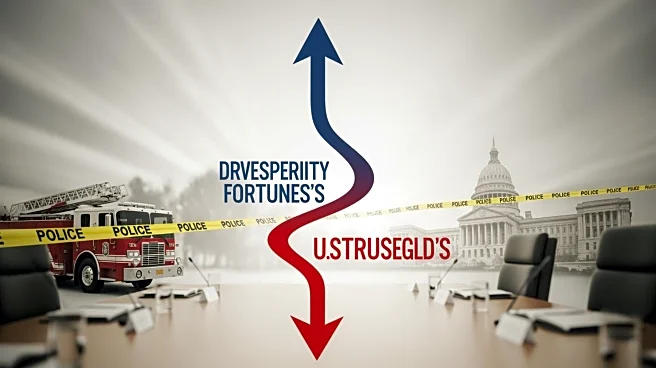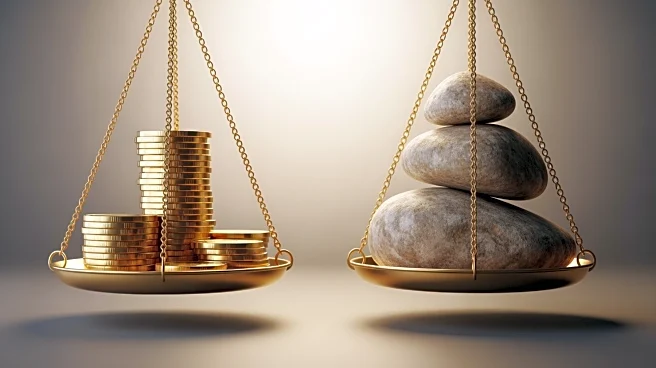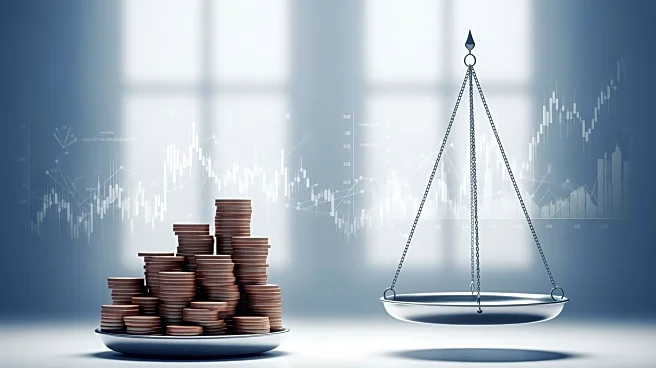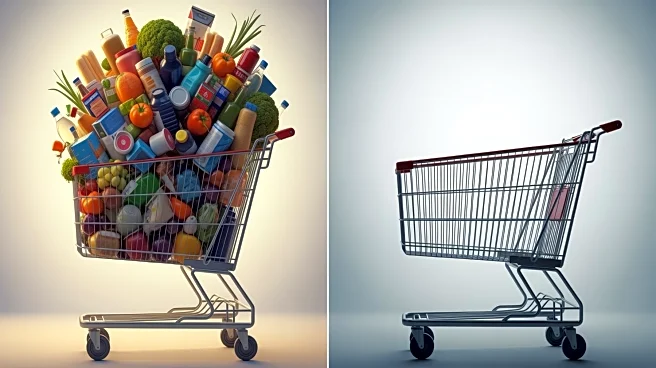What's Happening?
The U.S. economy is currently described as 'K-shaped,' indicating a divergence in economic fortunes between wealthier and lower-income households. Higher-income Americans are experiencing strong spending
and income growth, while lower-income individuals face financial strains from inflation, expensive housing, and rising debt. This economic bifurcation has been exacerbated since the pandemic, with the top 10% of earners driving nearly half of all consumer spending.
Why It's Important?
The K-shaped economy underscores growing inequality in the U.S., which can have significant implications for social stability and economic policy. As wealthier households continue to drive spending, lower-income groups may struggle with reduced purchasing power and increased financial burdens. This disparity could influence policy decisions on taxation, social welfare, and economic stimulus measures.
Beyond the Headlines
The long-term implications of a K-shaped economy include potential shifts in consumer behavior and market dynamics. As inequality persists, there may be increased demand for policies that address wealth distribution and support lower-income households. The role of technology and automation in exacerbating these trends may also be a focus for future economic research.













